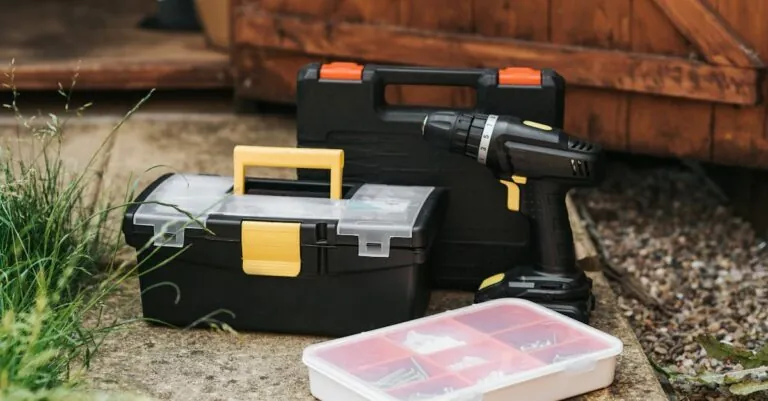When it comes to caring for toddlers’ health, you may feel like you’re navigating a minefield. One moment your little one is playing happily with toys, and the next they need eye drops. Yes, you read that right. Eye drops for toddlers might sound a little daunting, but they can be essential in addressing various eye conditions. Not only do these drops help alleviate discomfort, but they can also make a huge difference in your child’s everyday life. Let’s take a deep jump into the world of toddler eye care, because who doesn’t want a sparkling pair of eyes and a happy kid?
Table of Contents
ToggleUnderstanding Eye Conditions In Toddlers

Identifying eye conditions in toddlers can sometimes feel like trying to decipher a toddler’s mixed-up crayon drawing. Their eyes might be itchy, red, or watery, but explaining what’s happening in toddler language isn’t exactly straightforward. Understanding common eye conditions can help parents respond appropriately.
Toddlers may experience a range of issues, from conjunctivitis, which is more commonly known as pink eye, to more serious conditions such as blocked tear ducts. Allergies can also contribute to eye irritations, leading to the dreaded watering. Not to mention the adorable yet concerning habit of rubbing their eyes, all of which can signal underlying issues requiring medical attention. Parents and caregivers should be vigilant. Spotting these conditions early can lead to better outcomes for little ones.
Common Eye Problems That Require Drops
When it comes to toddlers, several common eye problems may necessitate the use of eye drops. Understanding these can save you from future frantic doctor visits.
- Conjunctivitis (Pink Eye): This is a leading cause of sudden eye redness and discomfort. It can result from bacterial or viral infections. Eye drops tailored for conjunctivitis can help combat inflammation and promote healing.
- Allergic Reactions: Allergies are often the culprit for itchy, watery eyes. Simple antihistamines in eye drop form can work wonders to alleviate symptoms and bring instant relief.
- Blocked Tear Ducts: A blocked tear duct can lead to excessive tearing and discomfort. Specific eye drops might be prescribed to help open up this blockage and regulate tear flow.
- Dry Eyes: Believe it or not, toddlers can experience dry eye syndrome. This condition might lead you to seek lubricating eye drops to keep those peepers hydrated.
Types Of Eye Drops Suitable For Toddlers
Selecting the right eye drops for toddlers is essential. It’s not a one-size-fits-all situation here. There are several types tailored to different needs.
- Antibiotic Eye Drops: Used mainly for bacterial infections, these drops are a must-have if your toddler has a confirmed case of conjunctivitis caused by bacteria.
- Antihistamine Drops: Ideal for combating seasonal allergies or specific allergic reactions, these drops can help soothe itchy eyes and reduce redness quickly.
- Steroid Eye Drops: Reserved for more severe inflammatory conditions, these drops require careful administration and close monitoring by a healthcare professional.
- Lubricating Drops: Perfect for those dry, irritated eyes, these benign drops can be used regularly to help keep your toddler comfortable.
How To Administer Eye Drops To A Toddler
Administering eye drops to a toddler might feel like trying to catch a greased pig. But, with a bit of preparation and the right strategy, it becomes manageable.
- Choose the Right Moment: Try to administer drops when your child is calm, maybe after storytime or a favorite show. A relaxed toddler is more likely to cooperate.
- Get Into Position: Position them either sitting upright or lying down with their head slightly back. Ideally, you can have them look up at the ceiling.
- Hold the Eye Open Gently: Using your thumb, gently pull down the lower eyelid. This creates a small pocket for the drops.
- Administer the Drops: Gently squeeze the bottle without touching it to their eye to release the recommended number of drops into the pocket you’ve created.
- Advise Keeping Eyes Closed: Encourage your toddler to close their eyes for a moment to let the drops take effect.
Safety Considerations And Side Effects
Safety is paramount when it comes to administering eye drops to toddlers. Although they are often safe, certain considerations should be taken into account.
- Check Expiration Dates: Always ensure that the eye drops are within their expiration date. Expired medications can be ineffective or even harmful.
- Watch for Allergic Reactions: Monitor their eyes and behavior after administering drops. Look out for symptoms like increased redness or swelling and consult a doctor if they occur.
- Follow Dosage Instructions: Never exceed the recommended dosage. It’s always better to consult your pediatrician if unsure.
- Understand Side Effects: Some drops can lead to temporary stinging or burning. This should subside quickly. Persistent discomfort or unusual behavior should warrant a call to the doctor.
Consulting With A Pediatrician
When in doubt, consulting with a pediatrician is your best course of action. They can provide a proper diagnosis and recommend appropriate eye drops tailored to your toddler’s specific needs. If the eye problems persist or worsen even though treatment, or if you’re uncertain about which drops to use, a healthcare professional should be the first call you make.
In many cases, pediatricians not only prescribe eye drops but also offer guidance on home care and preventive measures. They can provide invaluable advice, helping reassure parents navigating the eye care jungle.




